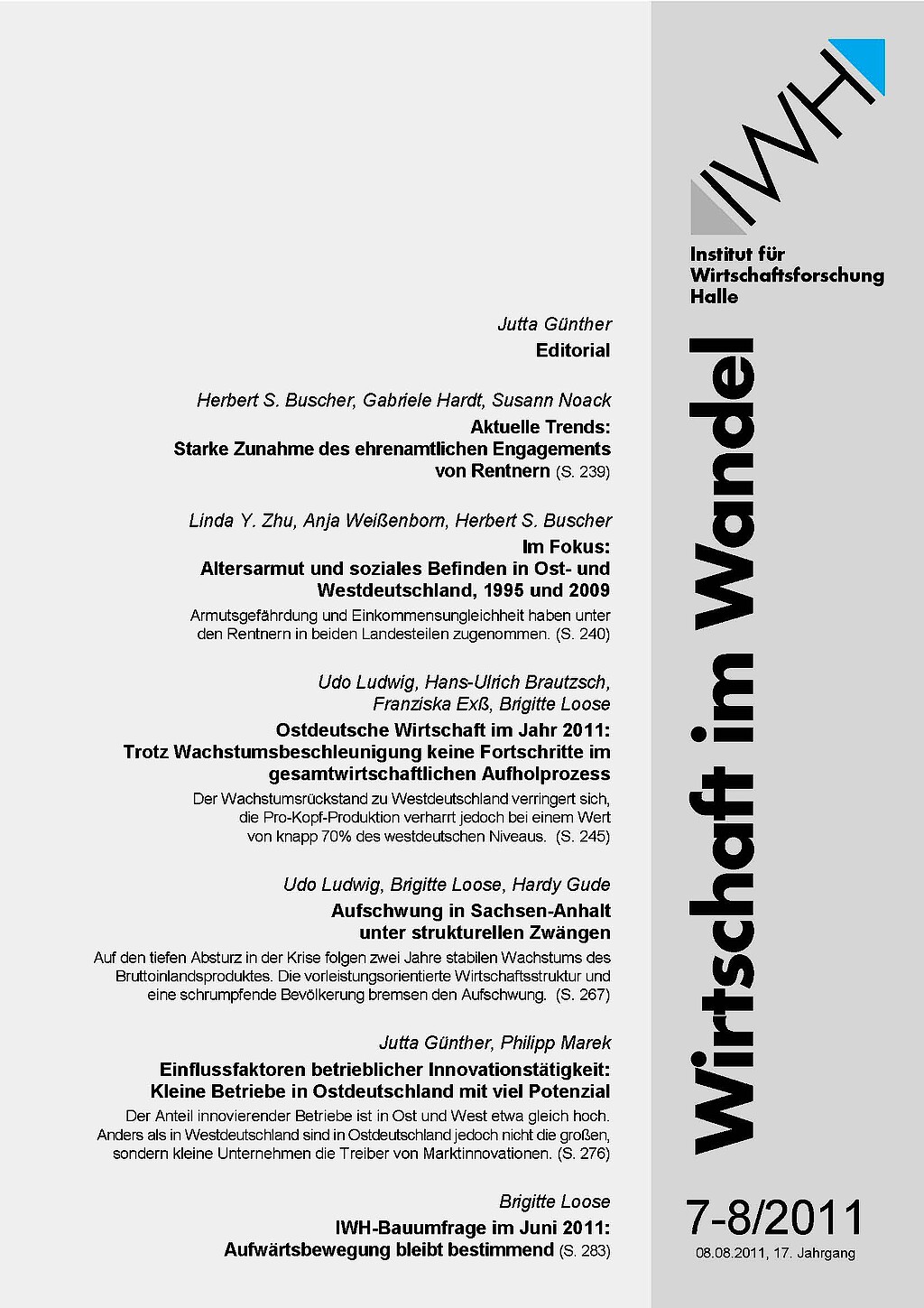
East German economy in 2011: Despite overall Economic Growth no Progress in Catching Up
Die ostdeutsche Wirtschaft schlägt in diesem Jahr ein höheres Wachstumstempo an als im Jahr nach der Krise. Während das bislang vom Export getriebene Erholungsmuster die Ausrichtung der ostdeutschen Produktion auf die Güternachfrage im Inland weniger ansprach und der Anstieg des Bruttoinlandsproduktes (BIP) von 2% im vergangenen Jahr deutlich hinter der deutschlandweiten Rate von 3,6% zurückblieb, wird sich das Wachstum im Jahr 2011 auf 2,8% beschleunigen. Ausschlaggebend ist der Wechsel der Auftriebskräfte in Deutschland auf die Nachfrage nach Investitions- und nach Konsumgütern. Treibende Kraft bleibt die Industrie, die bereits 2010 dank der Integration in die gesamtdeutschen Wert-schöpfungsketten fast so kräftig zulegte wie in Westdeutschland. In diesem Jahr kommen jedoch auch das Baugewerbe und die konsumnahen Dienstleistungsbereiche in Schwung.




